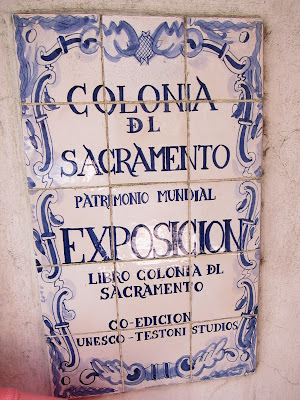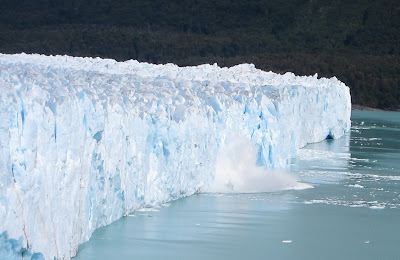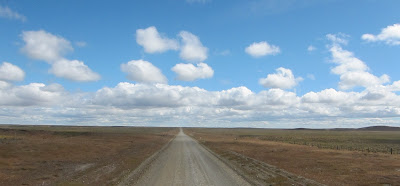"Heureux qui, comme Ulysse, a fait un beau voyage
[Happy is he who, like Ulysses, has made a wonderful journey]"
Joachim du Bellay, Les Regrets, sonnet XXXI, 1558.
Welcome to this travel blog compiling our 380 days of trip through four continents! We decided to both leave our jobs, families and friends, and go live the dream!
For more details about the preparation of our trip, you can consult the articles about the itinerary, our equipment, all financial aspects, health and administrative stuff.
As what you are reading is the last article of this blog we prepared several thematic slide shows for you to browse through some images of our trip around the globe, selected between more than 21.000 pictures!! Lucky you! :)
For more details about the preparation of our trip, you can consult the articles about the itinerary, our equipment, all financial aspects, health and administrative stuff.
As what you are reading is the last article of this blog we prepared several thematic slide shows for you to browse through some images of our trip around the globe, selected between more than 21.000 pictures!! Lucky you! :)
What did we see in one year? Capitals and tiny villages, buildings and all kind of houses, rainforests, lakes, rivers, beaches, volcanoes, mountains, exotic and less exotic animals, the richest and the poorest. We now have in mind countless images of landscapes and cityscapes.
We visited some of the natural and human-made wonders of the world (like Petra, the Taj Mahal, Angkor, Ha Long Bay, the Great Wall of China and the Forbidden City, the Macchu Pitchu, the Grand Canyon, the Galapagos Islands, the Salar de Uyuni, the Patagonia, etc.) and assisted to some great popular events like India winning the Cricket World Cup final while we were in New Delhi or the amazing atmosphere in New Zealand during the Rugby World Cup 2011.
More than that, traveling gave us the opportunity of knowing better and experiencing various cultural aspects of the areas we visited: from food or craft industry to clothing, from cultural expressions in the street (street art, live music and dances) to religious ceremonies (on the banks of the Gange river in Varanasi, gospel mass in New York, etc.).
More than that, traveling gave us the opportunity of knowing better and experiencing various cultural aspects of the areas we visited: from food or craft industry to clothing, from cultural expressions in the street (street art, live music and dances) to religious ceremonies (on the banks of the Gange river in Varanasi, gospel mass in New York, etc.).
Culture is not only museums; live performances are very much alive all around the globe: water puppet show in Hanoi, traditional dances in Sumatra and Bali, opera in the Opera House of Sydney, aboriginal dances in Australia or New Zealand, jazz concerts in a New Orleans, Cuban contemporanean dance performance in Cienfuegos, etc. To watch some of our musical encounters, have look at our Youtube channel!!
So.. what did we prefer? After visiting 32 countries and 153 cities, it is impossible for us to answer this kind of question. We enjoyed a lot discovering Syria, Nepal, Malaysia and the Galapagos islands. We could easily picture ourselves living in Hong Kong, New York or Buenos Aires. We would love to go back to Nepal, Thailand, Indonesia or New Zealand. And we are sad we had no time to visit Lebanon, Burma and Japan.
Generally speaking we felt less comfortable traveling in countries run by authoritarian regimes such as Iran or Cuba. Visiting China was one of our biggest challenges, especially because of the language barrier. We were not prepared enough to the shock that India sparks off. But one thing is for sure: there is no place or country we regret having visited!
So.. what did we prefer? After visiting 32 countries and 153 cities, it is impossible for us to answer this kind of question. We enjoyed a lot discovering Syria, Nepal, Malaysia and the Galapagos islands. We could easily picture ourselves living in Hong Kong, New York or Buenos Aires. We would love to go back to Nepal, Thailand, Indonesia or New Zealand. And we are sad we had no time to visit Lebanon, Burma and Japan.
Generally speaking we felt less comfortable traveling in countries run by authoritarian regimes such as Iran or Cuba. Visiting China was one of our biggest challenges, especially because of the language barrier. We were not prepared enough to the shock that India sparks off. But one thing is for sure: there is no place or country we regret having visited!
******
What does traveling for 380 days mean? It means:
- Covering 125 132 kilometers (i.e. more than 3 times the circumference of Earth),
- Taking 70 intercity buses, 48 planes, 24 trains and 8 ferryboats,
- Thus spending 945 hours in transportation (i.e. 39 full days!!),
- And waiting 261 hours (i.e. 11 full days) in airports, bus and train stations,
- Sleeping in 158 different beds and 25 overnight transfers,
- Visiting 153 cities in 32 countries on 4 continents,
- Changing currency 30 times,
- And spending countless hours online to prepare all that!!
- Being nomads, always carrying our house on our back.
- No clothing extravaganza as we only carried three T-shirts and two pants each.
- Having to wash by hands our clothing every two or three days (well the drying part – often with an hair dryer – may be the most difficult).
- Always having water, soap and toilet paper (in some countries toilet paper is a precious good!) in our bag.
- Prepare most of our meals in underequipped kitchens of hostels.
- Bad sleep, snoring or smelly roomates, back pains, showers with cold water, etc.
- Missing a few family parties and job opportunities.
- And losing (not that much) kilos.
But does it worth it? Without a doubt!!! :)
How did this one-year-trip change us? We like to think that traveling enriches us. Our adventure gave us perspective, a lot of comparison points, and a global idea of what the world looks like at the beginning of the 2010s.. We feel lucky we were born in free developed countries where there is no war or dictatorship at the present time.
This trip has reinforced our belief in the virtues of tenacity. Something like the motto: "When one want one can".
The most important thing is that we loved what we were doing – traveling – and never lost the curiosity and motivation, even when tired or trapped in crappy circumstances. Well knowing we would visit and learn new things every day helped! ;)
Another thing, we were somehow resigned to be robbed of our wallet, laptop or camera and we are still surprised it did not happened. Which just shows that the world is really not a dangerous place and a lot of bad situations can be avoided as long as one follows basic preventive measures, and try to respect the customs and rules of the society one is in.
******
They are multiple ways of traveling. We opted for the organized one long ago. It seemed to us that it was easier to keep our budget line if we booked in advance plane/bus/train tickets as well as rooms. The cheap and good value for money hostels/hotels are stormed and often full, especially if you arrive late at night. We did not want to look for a room on site, in an unknown city with our backpack to carry.
We are happy our budget forecasts were mostly accurate and we managed to spend no more money than anticipated. It is a great achievement as good reasons for spending are numerous and frequent! Staying in line with our budget was one of our main concern during the trip. We realized it would have been extremely difficult (or even impossible) to do this project with less money.
Here are some habits we took that could be named our "top traveler tips":
We are happy our budget forecasts were mostly accurate and we managed to spend no more money than anticipated. It is a great achievement as good reasons for spending are numerous and frequent! Staying in line with our budget was one of our main concern during the trip. We realized it would have been extremely difficult (or even impossible) to do this project with less money.
Here are some habits we took that could be named our "top traveler tips":
- We always had in our bag a pack of biscuits and some pasta in case of emergency.
- We often double or triple check when asking a direction. Some people were too polite to tell us they did not know the place where we wanted to go.
- We got as much information as possible from guide books, hostel front desks, other travelers, infomation center especially about the prices when they are not fixed.
- Five stars hotels are great places to hang out and to wait for a late bus/train/plane: comfortable coaches and free luggage storage (nobody will ask you if you are a client or not ;).
- State libraries are sometimes the only places in a city to have free internet access.
We hope our blog may be of use for anyone planning a long or a short trip abroad. At the time of concluding this blog, it had a total of 28 150 pageviews, mostly from France (24%), Portugal (13,5%), United States (11%), India (5,5%) and Germany (5%).
Last but not least we would like to thank all the persons that openned us their homes and shared with us their experiences and knowledge, especially about their region/country. We spent with them our most memorable evenings. We are very grateful to Damiano & Stefano, Mohammad & Parisa, Ruth, Phillys & Gina, Patrick, Baran, Astrid, Anaïs & Guillaume, Szidonia, Simon & Rick, Whitney, Mira, Eric, Sara, Josip, David & Iona, Pavel & Elitsa, Ali, Paola, François & Karina, Radu, Yong, Catherine, Richard & Zuzana, Sheryl, Celia & Alex, Yuji, Rebekah, Cheng, Jen & Andrew, Vicky & Dave, Natalie, and Alfredo.
Some other new friends:
So what do we do now? Well to look for a job seems unavoidable. Also to order a new passport with white sheets. We never know.. ;)































































